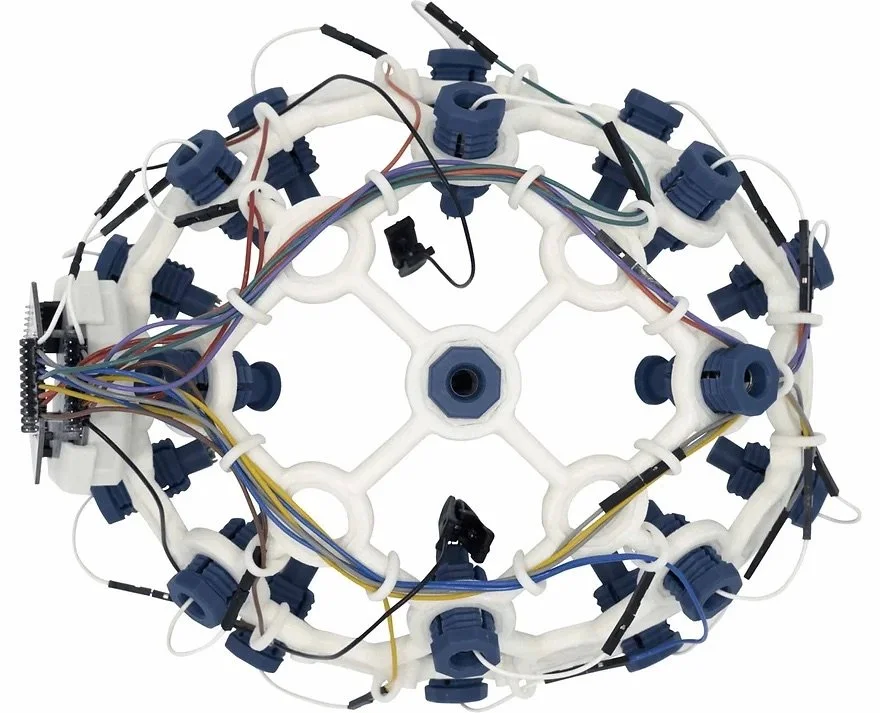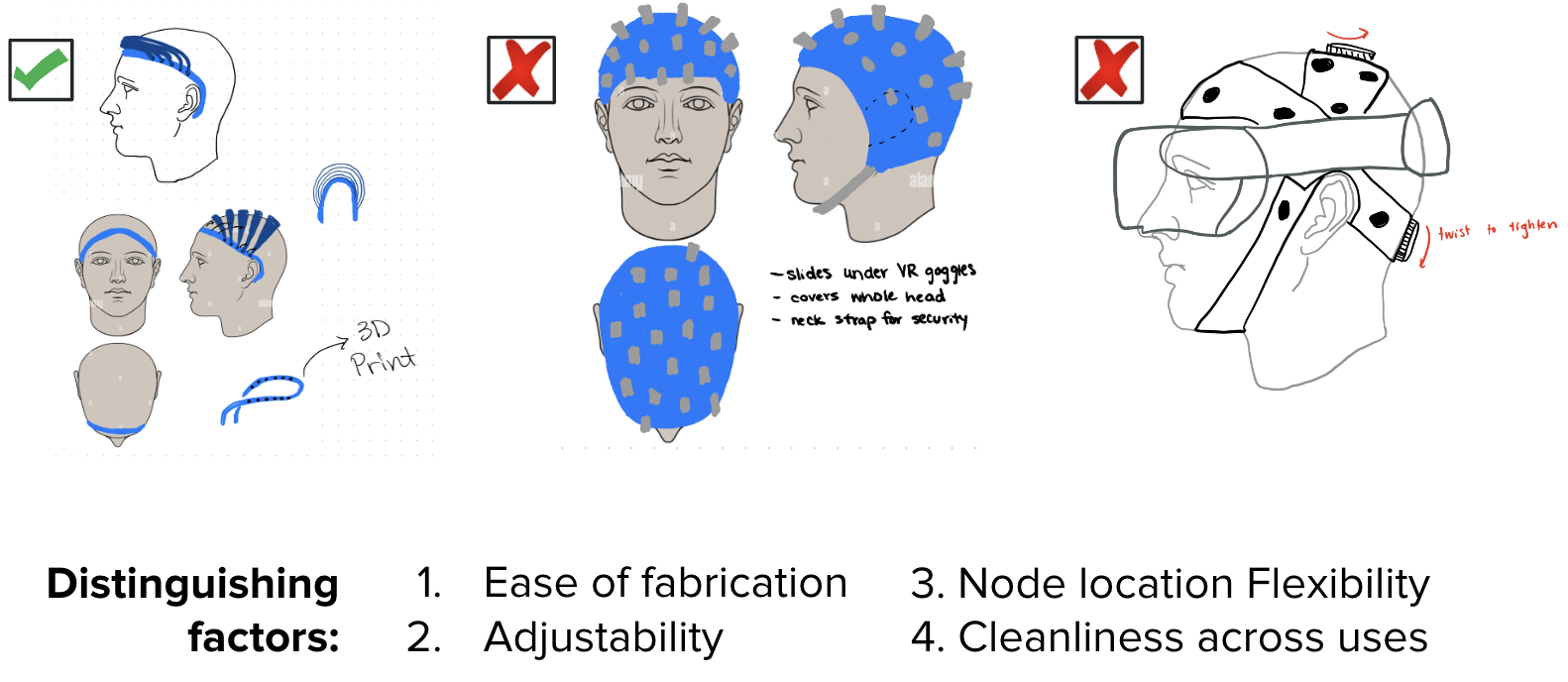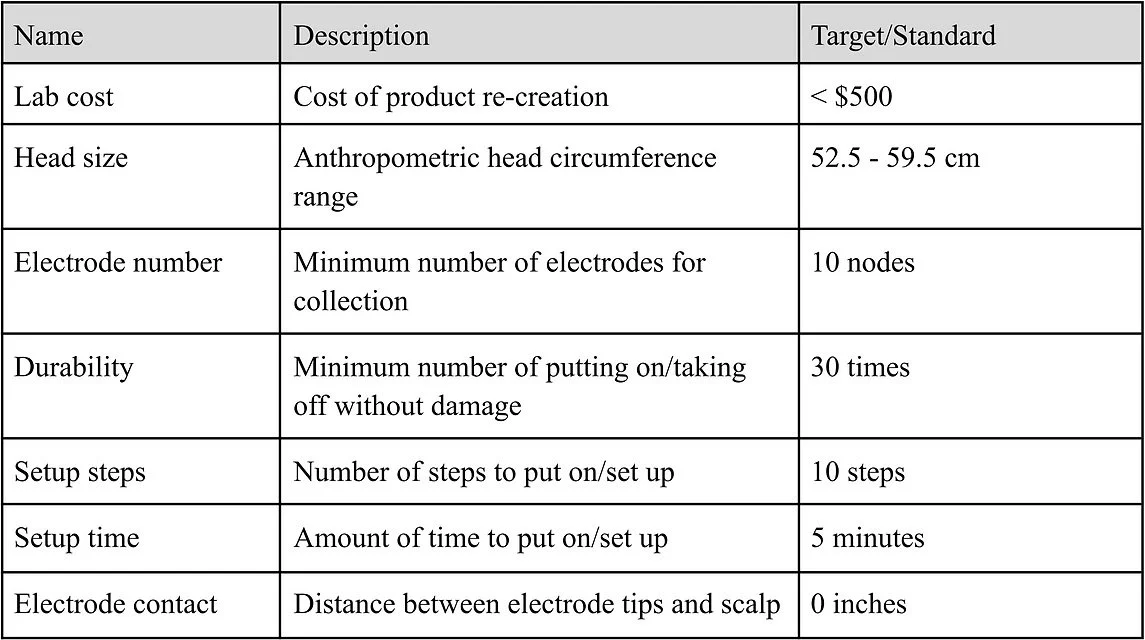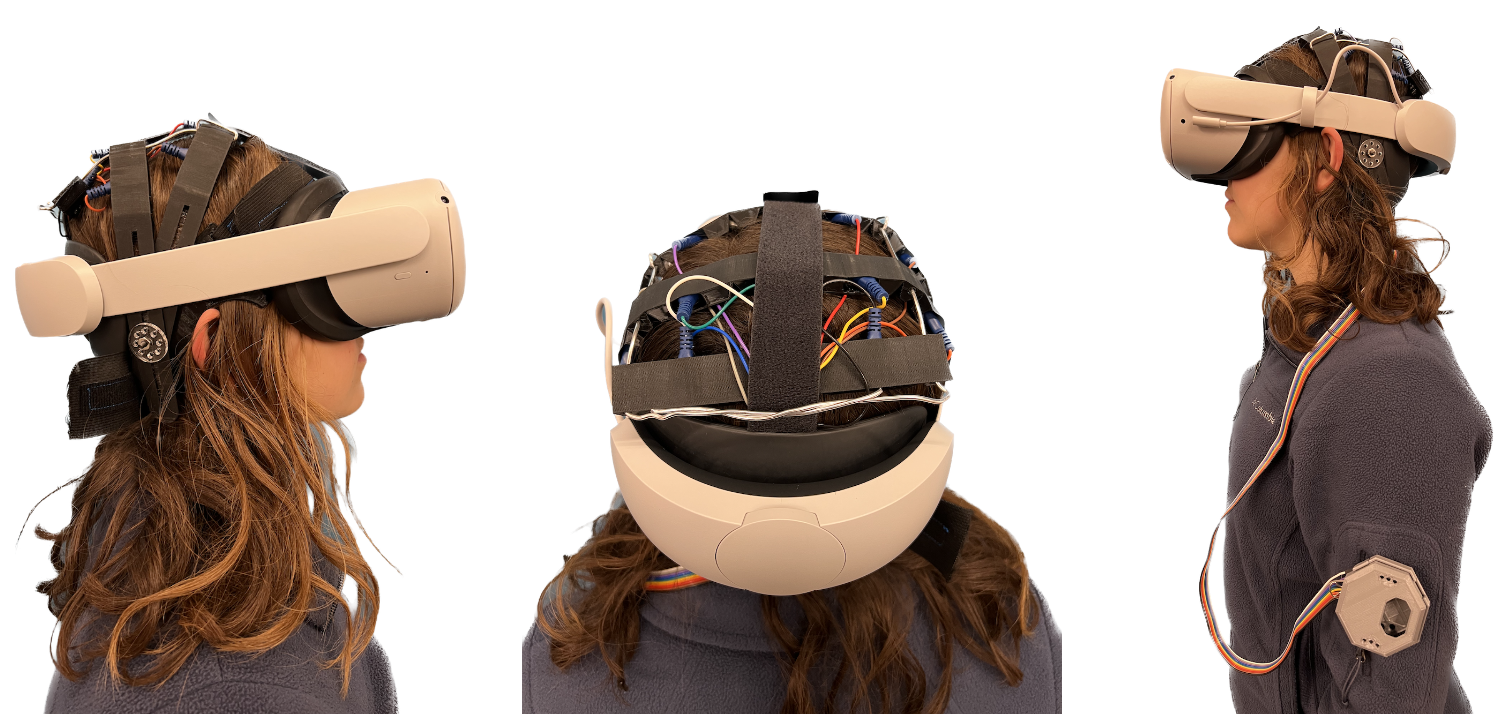EEG DATA COLLECTION HEADSET
Description
For my capstone mechanical engineering project, a team of 2 other mechanical engineers and I created a headset to collect EEG data in unison with VR/AR goggles.
My Role
Owned the mechanical design of the electrode straps
Managed the project timeline via Gantt Chart
Determined the engineering specifications for the product
Created open source instructions for replicating the product
The Problem
The Mitsubishi Electric Research Laboratories (MERL) are interested in using an EEG headset device in unison with VR goggles, but the existing electrode cap is rigid, clunky, not adjustable, and potentially damaging to the VR goggles. Thus, the research team needs better mechanical hardware for sensing and collecting biosignals that can be flexibly integrated alongside VR headsets.
Over the course of the semester, my partners and I designed and fabricated a physical headset for OpenBCI comb EEG sensors that can collect data for a range of head sizes. The headset fits with any type of AR/VR goggles and allows users to wear both the goggles and headset at once during data collection. After we completed our design, we published our CAD files, step-by-step instructions for assembly, and other materials needed to recreate the headset on the OpenBCI community forum so that other users of OpenBCI technology can recreate it for their own data collection.
Stakeholder Needs & Engineering Specifications
-
Fits a range of head sizes without unintended movement/slippage:
The headset should be adjustable to a variety of head sizes to ensure that the scope of the research being performed is not limited to a particular segment of adults. This was our top priority because it directly allows for key flexibility for the researchers and test subjects, while also fulfilling ethical responsibilities by allowing the data collected to be more diverse and inclusive. The accuracy of the data also depends on the adjustability of the headset – if the fit is too large, the electrodes will be far from the subject's head and not be placed in the correct locations to receive accurate data, therefore the ability for the headset to adjust is crucial.
-
With various VR/AR headsets:
One of the main goals was to provide a product that can easily integrate with AR/VR headsets in order to conduct research. The researchers at MERL indicated that an ideal solution for the EEG data collection headset would have the ability to integrate with several different types of goggles, which was key in providing extensive research across a broad scope. It also allowed for our headset to be used in comparative research that spans a variety of VR products.
-
Easy to set up & accurately collects EEG data:
Researchers rely on the data that is transmitted to the EEG sensors. The quality of the data received from our device will have to hold up to the standards of existing practices. The most important part of EEG data collection is firm and consistent contact with the scalp on all electrodes. Thus, the placement and consistency of these sensors will determine if our device is viable for research purposes. Electrode contact serves as a key baseline that must be reached in order to have a functioning device.
-
Open-source (OpenBCI) and easy to fabricate:
OpenBCI is an open source community that makes hardware and software for collecting biosignals. Instructions for fabrication were published on OpenBCI for MERL or other researchers to build the headset themselves.
Having multiple devices will allow more research to be conducted. Additionally, if the lab plans on using our headset cap beyond our suggested number of wears or if a piece of it becomes defective, they should be able to fabricate another to replace it. Our team thoroughly and clearly documented each step of fabrication so that they will be able to make it without our assistance.
-
Withstands many uses:
Since the research team plans on using our product in research, it is likely that a great deal of people will be putting on and taking off the headset. It is important for a data collection tool for research to be able to withstand wear across many uses without compromising the accuracy of the data – thus, it is essential that our product is durable across many uses.
Concepts
User Guide
Selected Concept
Final Prototype
Features:
3D printed TPU straps
Adjustable elastic band wrapping around the head, with 3D printed TPU earpieces to serve as locating features
Adjustable at the anchor point











